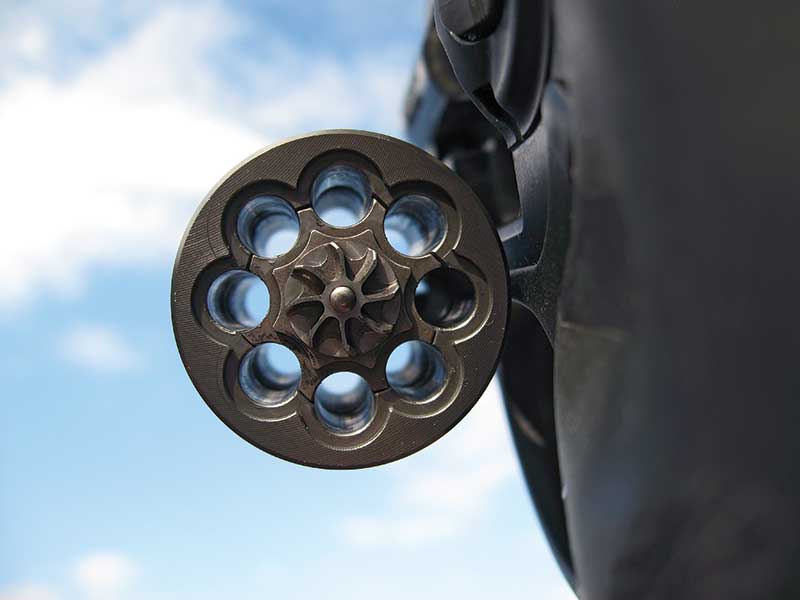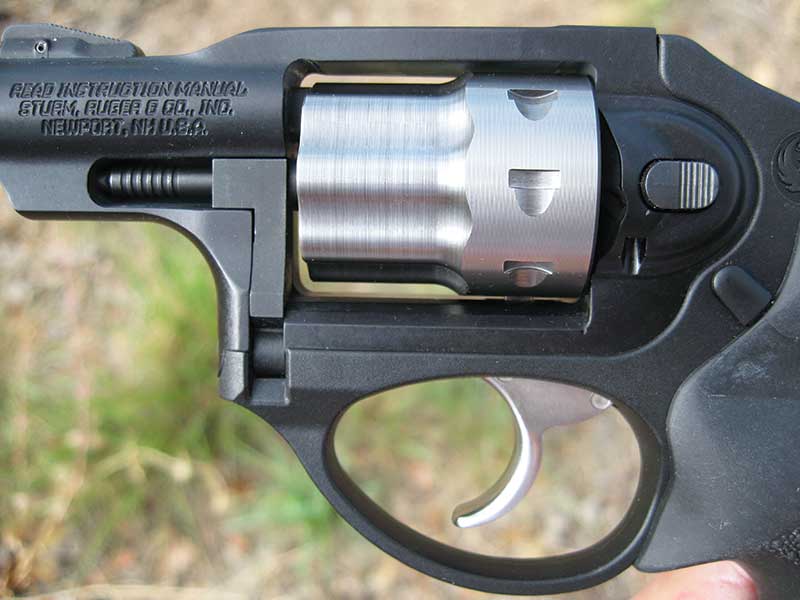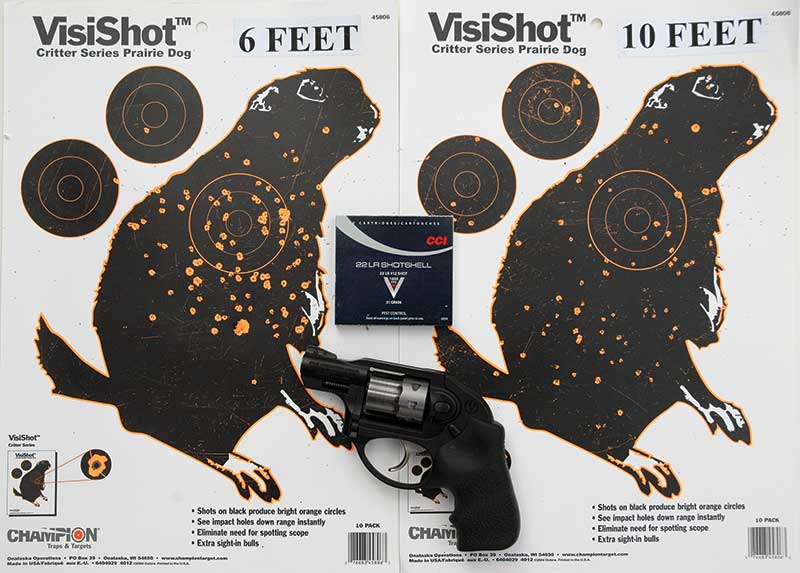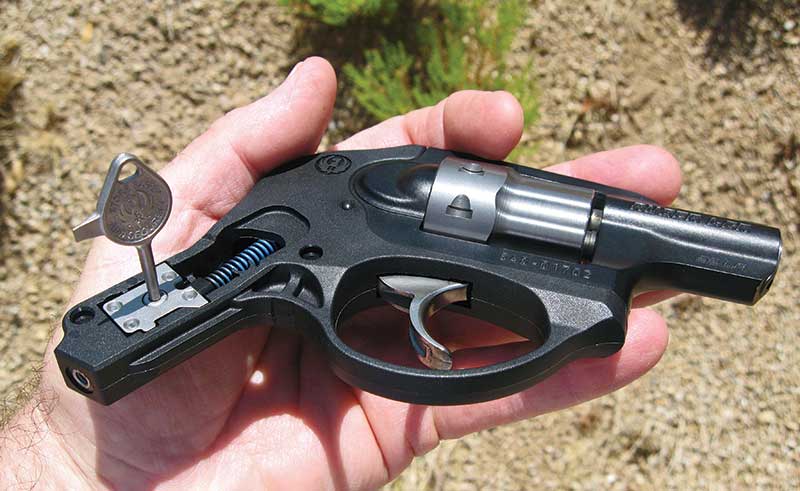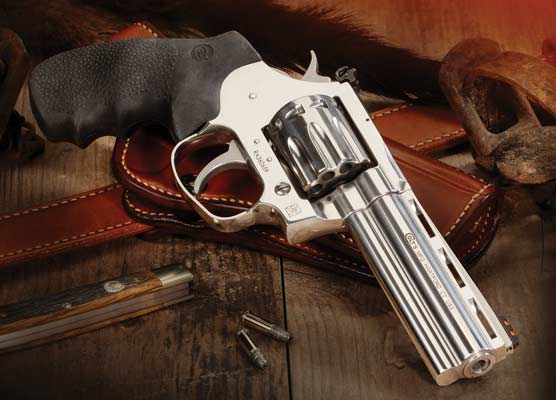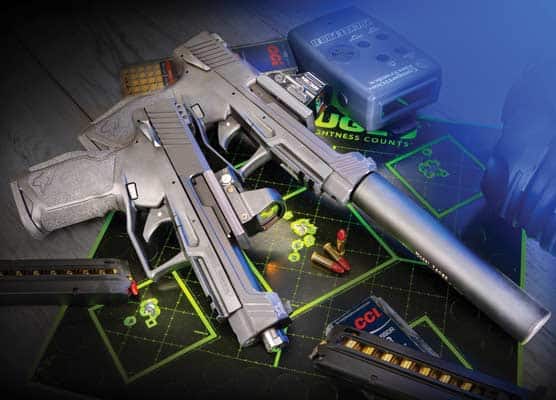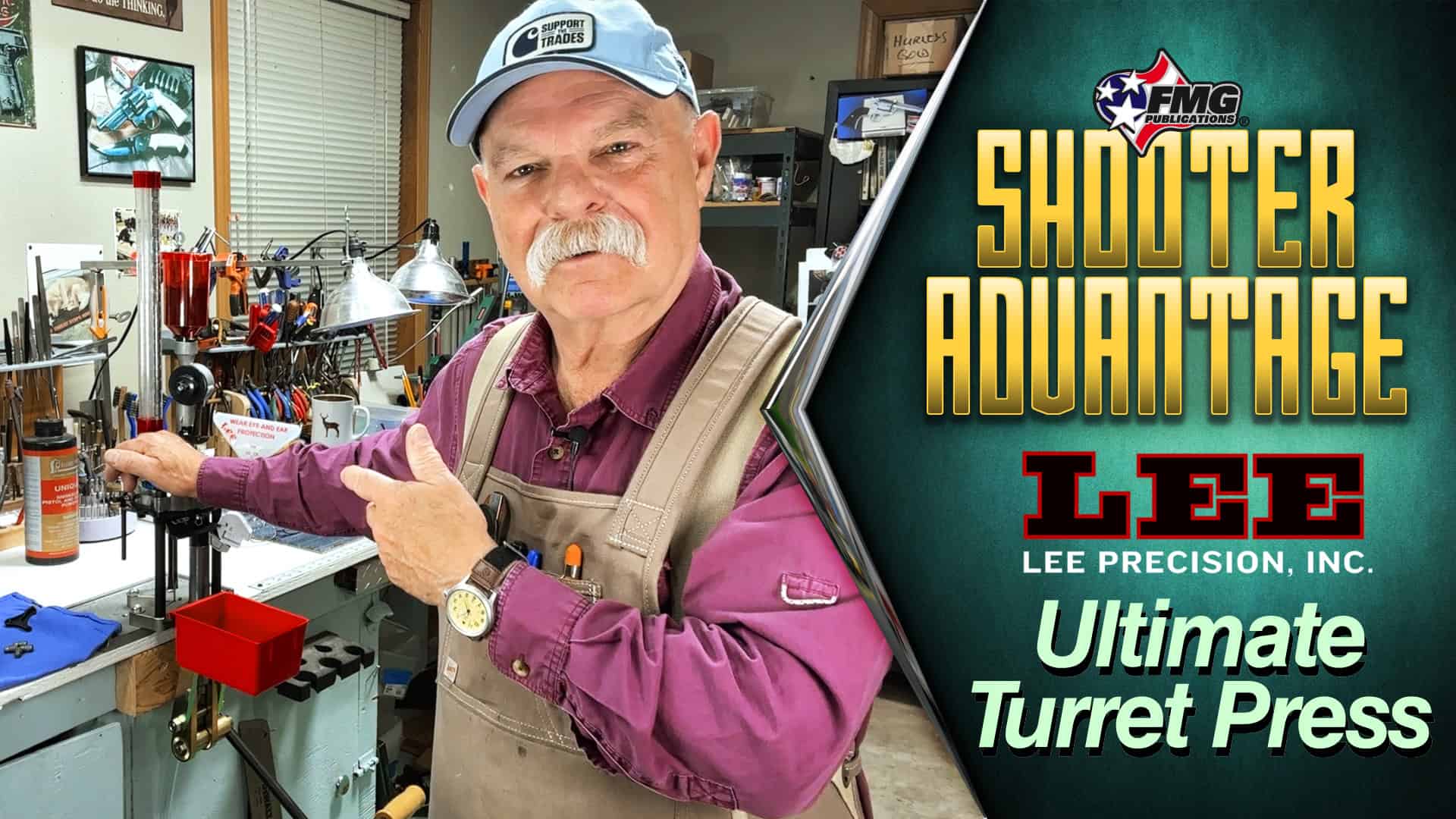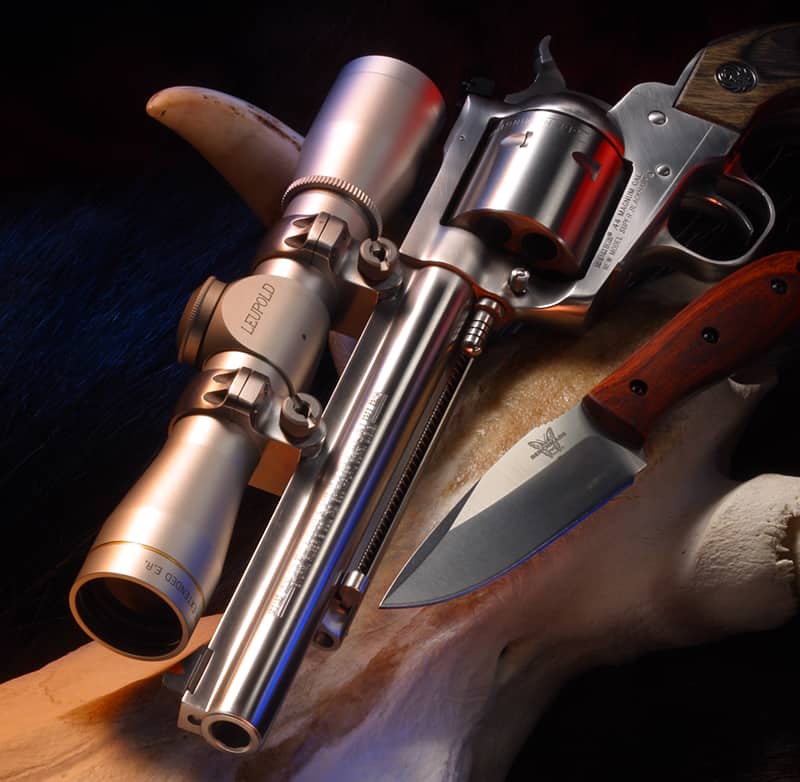Ruger’s Little Pocket Revolver
The LCR is now offered in an 8-shot .22 Long Rifle
If there’s any handgun more fun, more versatile, more handy and cheaper to shoot than a .22 kit gun or pocket gun, I have yet to see it. Short, light and always with you, it’s a gun with a definite and endearing personality. Building on the recent introduction of their popular Lightweight Carry Revolver (LCR) in .38 Special and .357 Magnum, Ruger has released a .22 Long Rifle version of the LCR. The new .22 LCR is destined to carve out a distinct niche for itself in the Ruger revolver line.
A small, light .22 revolver makes a lot of sense. No handgun is more versatile. That rimfire cylinder will digest BB caps, CB caps, CB Longs, Shorts, Longs, Long Rifles and shotshells.
It doesn’t matter whether they’re blank loads, squib loads, subsonic loads, target loads, high-speed loads, solids, hollowpoints or shot. As long as that universal cylinder keeps turning, that little revolver will keep shooting.
No handgun is handier and more accommodating to different applications and environments. For the last three decades, Smith & Wesson’s stainless Kit Guns in .22 LR and .22 WRM have ridden my hip in the woods and across the fields more often than not. Built on the petite J-frame, the grip is a little small for my hands but with the addition of a Tyler’s Grip Adaptor, it fits me like a glove.
Loaded with CCI CB Longs, the Long Rifle Kit Gun has slain thousands of wood chips, cow paddies and other inanimate targets of opportunity from the hip and as well as in aimed fire. The .22 WRM version has accounted for scores of edible cottontails, a few coyotes and one very rabid acting skunk. These little guns are simply handy and provide opportunities for endless hours of relatively quiet and inexpensive practice.
Enter Ruger’s new rimfire LCR. Right out of the box, the rimfire LCR is an exact clone of Ruger’s popular centerfire version. The dimensions are the same. Barrel length: 1.875″; overall length: 6.5″; height: 4.5″; width: 1.31″ in centerfire and 1.28″ in rimfire. Weight: 13.5 ounces in centerfire and 14.9 ounces in rimfire. Same U-notch integral sights. Same choice of grips: Hogue Tamers or Crimson Trace Lasergrips. Same-same-same. It’s a perfect matched set! Either revolver becomes the ideal understudy for the other, a factor which adds real value to the overall design.
Speaking of design, it’s pretty radical for a revolver. Designed by one of Ruger’s in-house engineers, Joseph Zajk, the lower frame is polymer; the upper frame is aluminum; the barrel is simply an inserted steel liner while the highly sculptured, 8-shot cylinder, crane assembly, front latch, cylinder latch and fire control system are steel as well. What you come realize and appreciate is the composite LCR is a successful design for meeting the objectives of economical mass production and light weight.
It’s a safe revolver and features an integral lock-and-key system beneath the grip as well as a Ruger supplied padlock. Packed with the LCR are two small combination key-screwdrivers which permit you to remove the grip secured by one screw and then lock the fire control system. As an alternative, you can lock the shackle of the padlock through the cylinder frame and triggerguard.
How does it handle? The LCR is a natural pointer. The angle of the memory-grooved Hogue Tamer grips to the frame is excellent. Closing my eyes and raising the revolver into firing position and then opening my eyes, I find the sights are almost in perfect alignment. Along the same lines, the LCR is a great performing fun gun when shot from the hip. With a little practice, you can keep a tin can just a’bobbling along the good earth until that eighth round goes pop. Another option, Ruger offers the LCR with factory-fitted Crimson Trace Lasergrips for an additional $267.
The LCR trigger was a pleasant surprise as well as its oversized triggerguard for gloved hands. As a double-action only revolver, a good trigger counts. The LCR trigger pulls smoothly and breaks cleanly in double-action mode. For more deliberate aimed fire, the trigger can be manipulated to almost a single action level of precision. We call it “stacking.” By pulling through and stopping at the point where the cylinder has rotated and is locked in place, you can take precise aim before applying just a bit more pressure on the trigger to break the shot.
I find that easiest way to stack a double-action trigger is to insert your trigger finger more fully through the triggerguard so the fleshy pad between the first and second joints is in contact with the trigger. As you pull though to the stop point, the tip of your trigger finger will touch the side of the frame and give you total control of the trigger in the stacked position. At that point, simply squeezing your grip a bit harder will usually break the shot. The LCR can safely be dry fired so there’s no reason not to practice this valuable technique until it’s mastered.
How does it shoot? I shot regular and high velocity loads on targets at 15 yards as well as CCI shotshells at 6′ and 10′.
The effectiveness of the CCI shotshell loads are reflected in the two Champion brand prairie dog targets. The LCR really throws some impressive killing patterns. If you tramp around in venomous snake country or fish where cottonmouths lurk, an LCR loaded with half a cylinder of shotshells would be very comforting.
On targets at 15 yards, the LCR’s short 3-3/4″ sight radius called for some hard holding. I learned two things about the gun. First, it favors standard velocity, Long Rifle ammunition for sheer accuracy. In fact, CCI’s new “Quiet-22” loading turned in the best, 5-shot groups which averaged 2″ while high-velocity loads like Winchester’s Power-Point and CCI’s Mini-Mag spread from 2-1/2″ to 3-3/4″.
The second thing I discovered is that some, not all, but high-velocity loads like CCI’s Mini-Mag and Winchester’s SuperX formed a small bulge on the lower case wall just in front of the rim and opposite the firing pin indentation. The effect of the bulged cases was to make extraction and ejection stiffer than normal. Federal high-velocity ammunition didn’t evidence this same problem.
Stored in your tackle box or vehicle, carried on your hip, maybe even stuck in your pocket for short jaunts, Ruger’s LCR is a neat concept gun and a welcome addition to the small frame carry plinker clan.
Galco Gunleather
2019 W. Quail Ave.
Phoenix, AZ 85027
(800) 874-2526

Get More Revolver Content Every Week!
Sign up for the Wheelgun Wednesday newsletter here:

